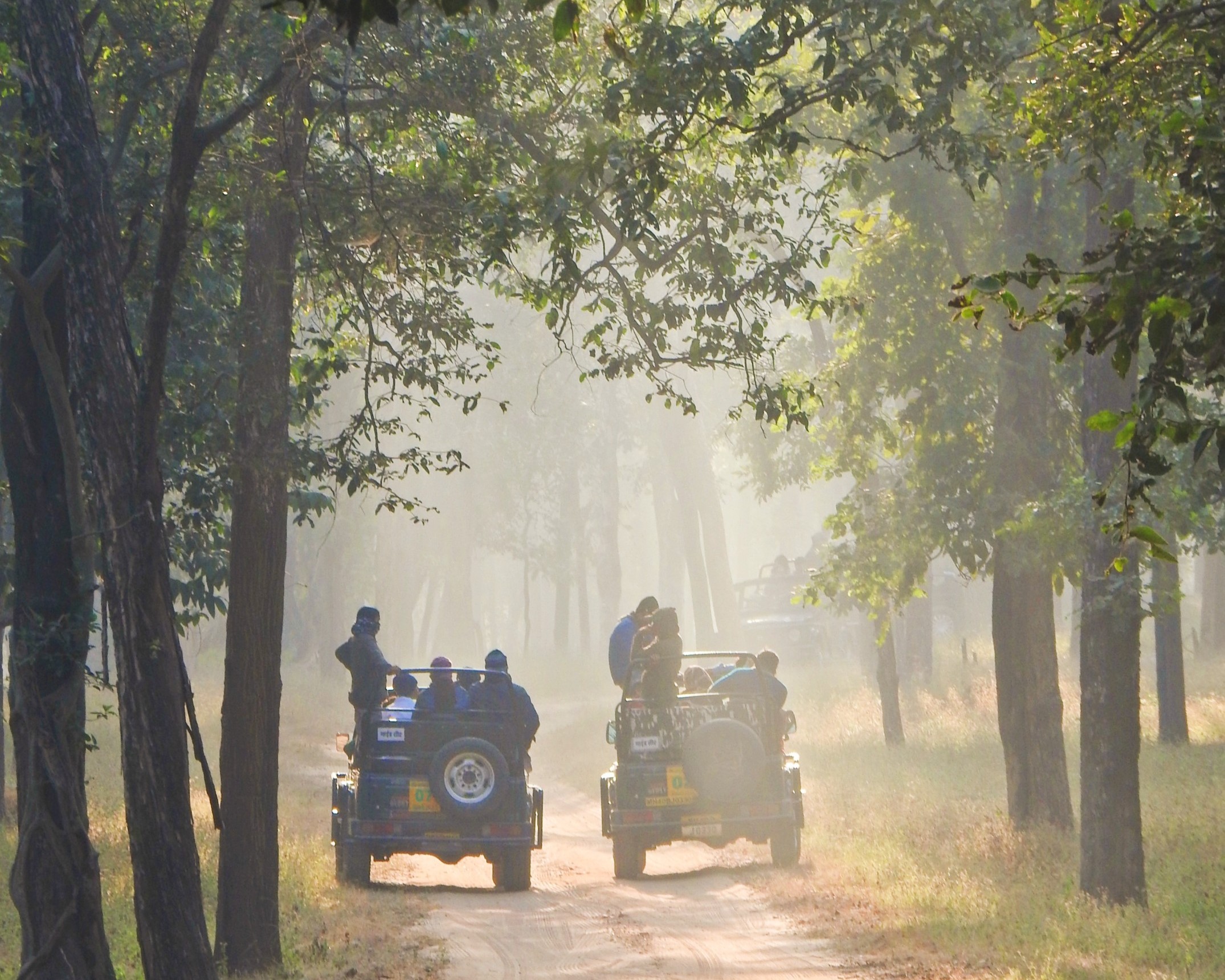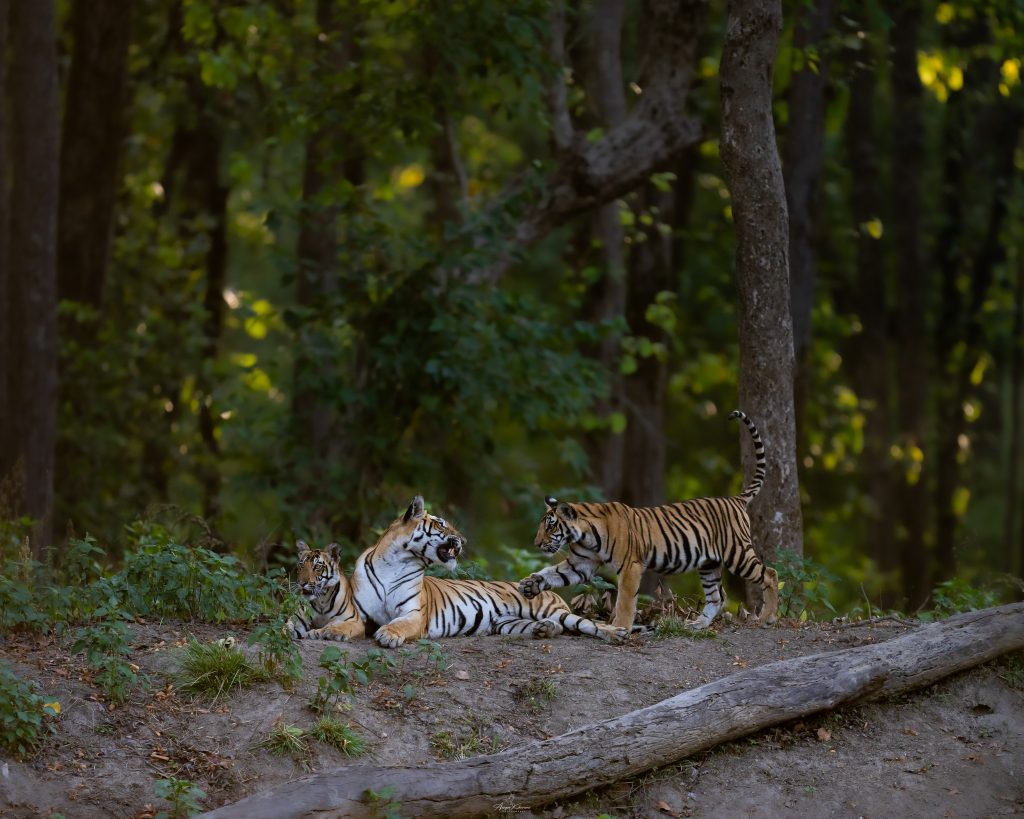One of the very first designated tiger reserves of India declared in 1973-74, Kanha National Park is often referred to as one of the best conservation models for centuries. Globally renowned for its rich natural and cultural heritage.
Geographically Kanha National Park lies on the northern slopes of the Maikal chain of hills in the eastern Satpura mountain ranges of the Central Indian Highlands (latitudes 22˚ 7’ N & 22˚ 27’ and longitudes 80˚26’ & 81˚3’ E).
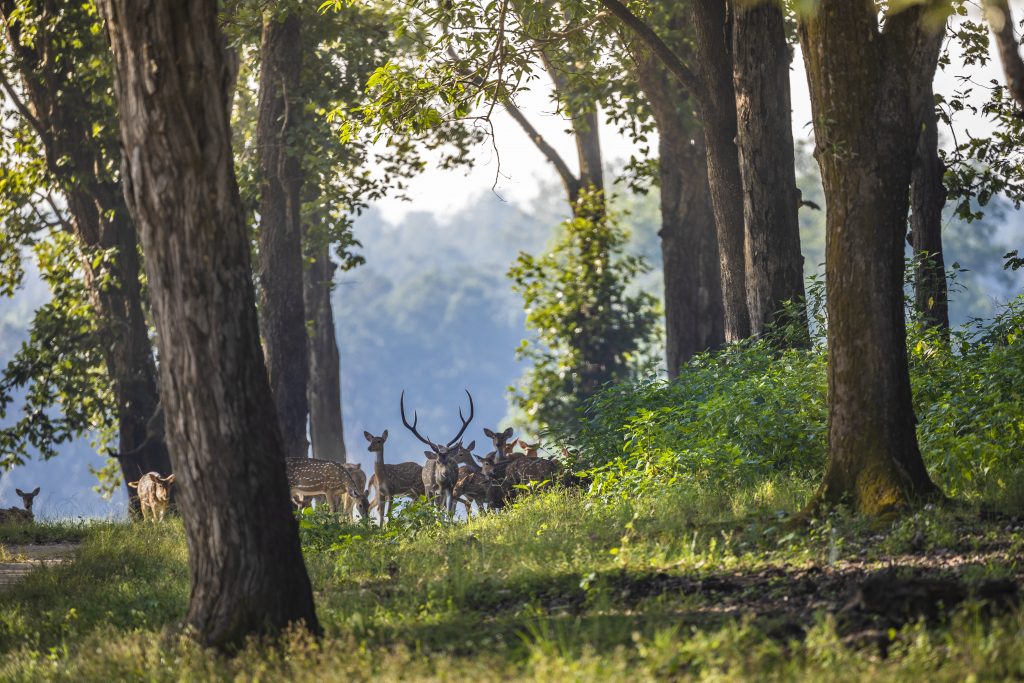
The National Park comprises two distinct administrative strata: the core zone, covering an area of 940 km², is devoid of human settlements and focuses primarily on biodiversity conservation. The buffer zone, spanning 1134 km², serves as a multiple-use area allowing human settlements, ecotourism structures, agricultural activities, and livestock grazing.
Within the buffer zone, 585 km² of forested area provides a wild habitat, promoting sustainable co-existence between natural and cultural aspects. This conservation unit, totaling 2074 km², emphasizes the harmonious balance between wildlife preservation and human activities.
Administratively the National Park lies in the districts of Balaghat and Mandla of the state of Madhya Pradesh and currently is one the largest protected areas among all the protected areas of the state.
History of Kanha National Park
Considering the name Kanha, perhaps it has originated from the name of one of the most widespread soil types named locally as Kanihar. The conservation history of Kanha began in 1879 (no previous record to cite) when it was declared as a protected area after the —and further designated as a wildlife sanctuary in 1935(cite law) and further in 1955( cite law) as a national park and finally got a title of Tiger reserve after global tiger conservation regime motivated India to launch its Tiger conservation plan in 1973 and WPA 1972 of India.

Kanha has been serving a vital role in Scientific research, tourism-based education, and awareness for wildlife protection and conservation to the stakeholders and most contrastingly the population management of certain ecologically threatened species like tigers (Panthera tigris tigris ) India’s national animal and endemic hard ground barasingha (Rucervus duvacelli branderi) state animal of Madhya Pradesh in Central Indian Landscapes.
Additionally, several popular entry gates in Kanha National Park serve as vital access points for visitors and wildlife enthusiasts, providing them with immersive experiences amidst nature’s splendor.
Vegetation of Kanha National Park
Kanha is a tropical moist deciduous forest (Champion and Seth, 1968) interspersed with grasslands of anthropogenic origin, Undulating terrain, and altitudinal variation (450-950m asl) across the area provides an excellent floral composition (850 sp) and harbors to the rich, healthy and viable biodiversity.
Vegetation experts have classified the four different habitat types viz- grasslands, pure sal (Shorea robusta) forest, Miscellaneous mix broadleaved forest, and bamboo (Dendrocalamus strictus) mixed forest present in the forest.
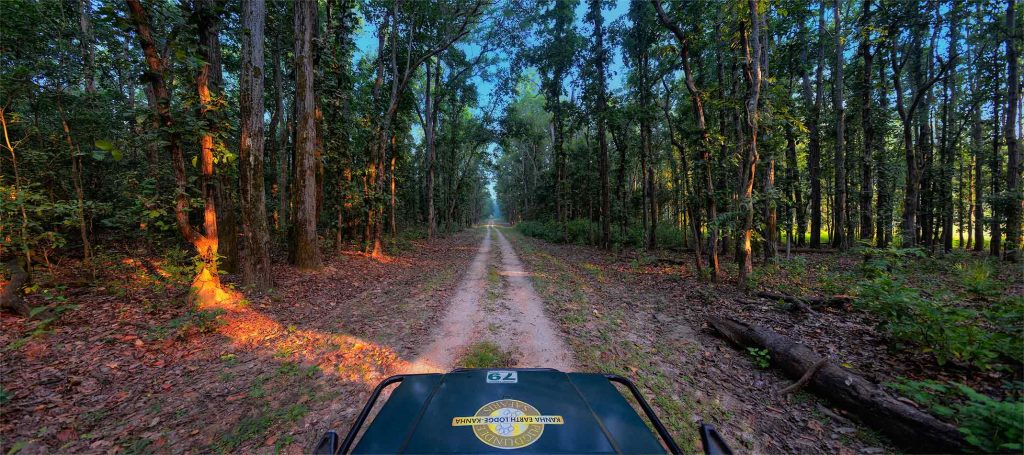
The higher elevation areas consist of plateaus-capped hills with limited tree growth and primarily grasslands. Lower altitudes are mainly dominated by sal and valleys support bamboo mixed forest with open grassland meadows with a wide diversity of grasses (the most dominated floral family in Kanha). Biogeographically forests of the Kanha National Park are categorised under 6B zone ( Rodgers and panwar1998and Panwar and Mathur, 2002).
Flora and Fauna of Kanha National Park
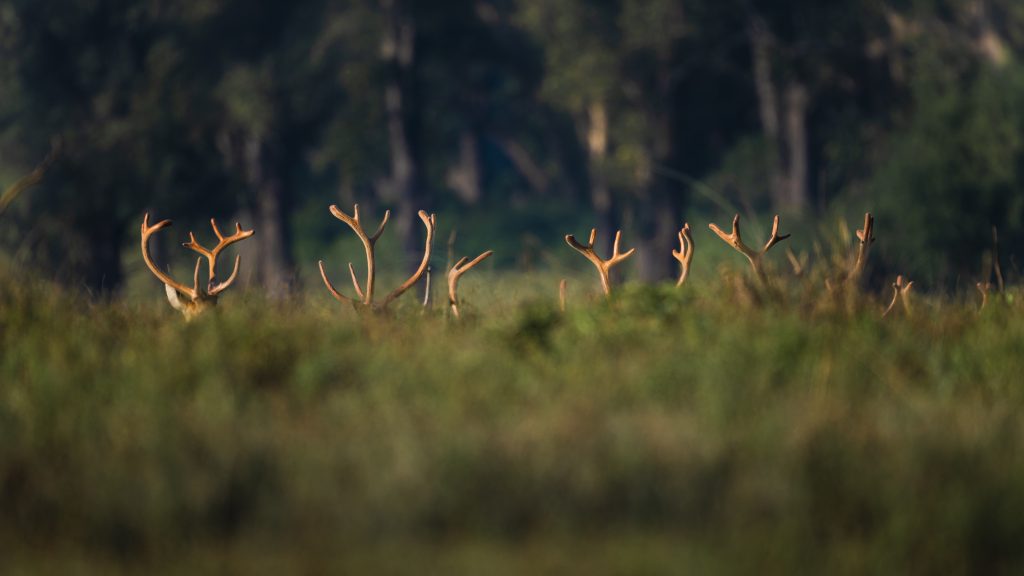
The unique and diverse flora of Kanha provides excellent habitat for faunal assemblage and many of them are listed as threatened. Contrastingly these species are the Tiger(the world’s largest cat), leopard, wild dog, and sloth bear along with nine species of ungulates including the world’s largest Bovid( gaur), Asia’s largest antelope (bluebell/nilgai) and Asia’s smallest antelope( four-horned antelope) Asia’s largest species of deer( sambar), and smallest species of deer(mouse deer).
The reserve also harbors small carnivores and lesser-known mammalian species such as rusty-spotted cats (the world’s smallest cat), leopard cats, pangolins, and honey badgers. If you want to know more about the flora and fauna of Kanha National Park, click on this link to learn more.
Accommodation in Kanha National Park
Kanha Earth Lodge, eco luxe resort, is tucked away in a small tribal hamlet bordering Kanha’s buffer zone, and built in less than 5% of the 16 acres of natural forest that surrounds it. The lodge and its furniture is constructed and designed using local waste wood and recycled wood; a true reflection of impeccable standards in green architecture.
This luxury resort in Kanha National Park is a harmonious blend of sustainability and comfort, offering guests a unique and eco-conscious experience amidst the wilderness.
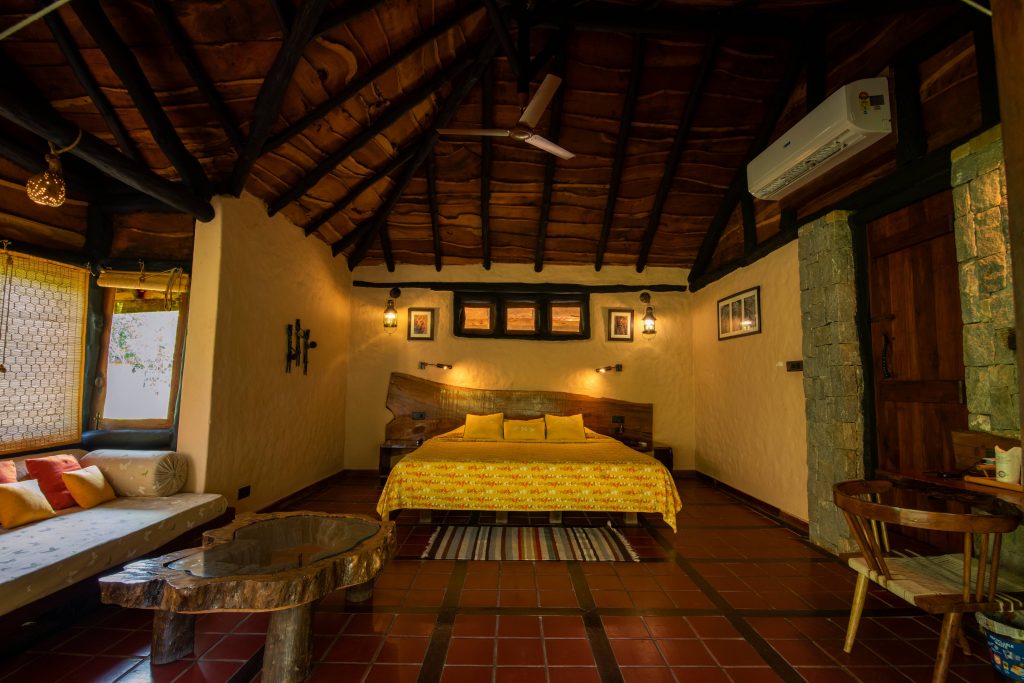
Inspired by traditional Gond architecture, the cottages have been meticulously designed using locally available materials such as mud plaster, stone, terracotta tiles, rough-hewn timber beams. The furniture has been delicately crafted using waste and recycled wood, thereby blending seamlessly with the natural forest setting.
Also Read: Why Book a Full Day Safari in Kanha National Park
People of Kanha National Park
The Kanha that we see today is not what it used to be without the support of locals, natives, and indigenous people.
People have contributed a lot to the conservation of the modern-day Kanha National Park which has been shaped at the cost of sacrificing their birthplaces and ancestral farmlands which were gradually relocated in the last four decades outside the critical tiger habitat.
This milestone was very much impossible without the support, awareness, and sacrifices of the natives of Kanha.

People belonging from the tribes like Gond, Baigas, and Bheels were the actual custodians of the centuries-old history of conservation of this protected area which is a modern-day tiger reserve and known for successful conservation models for both tigers as well as Hard Ground Barasingha.

